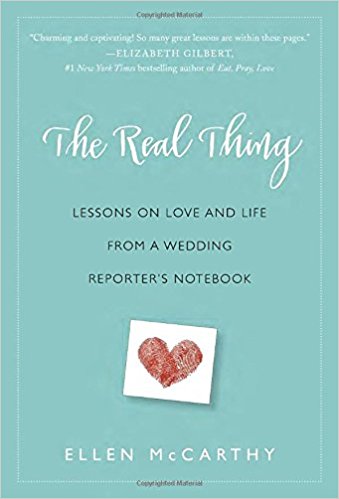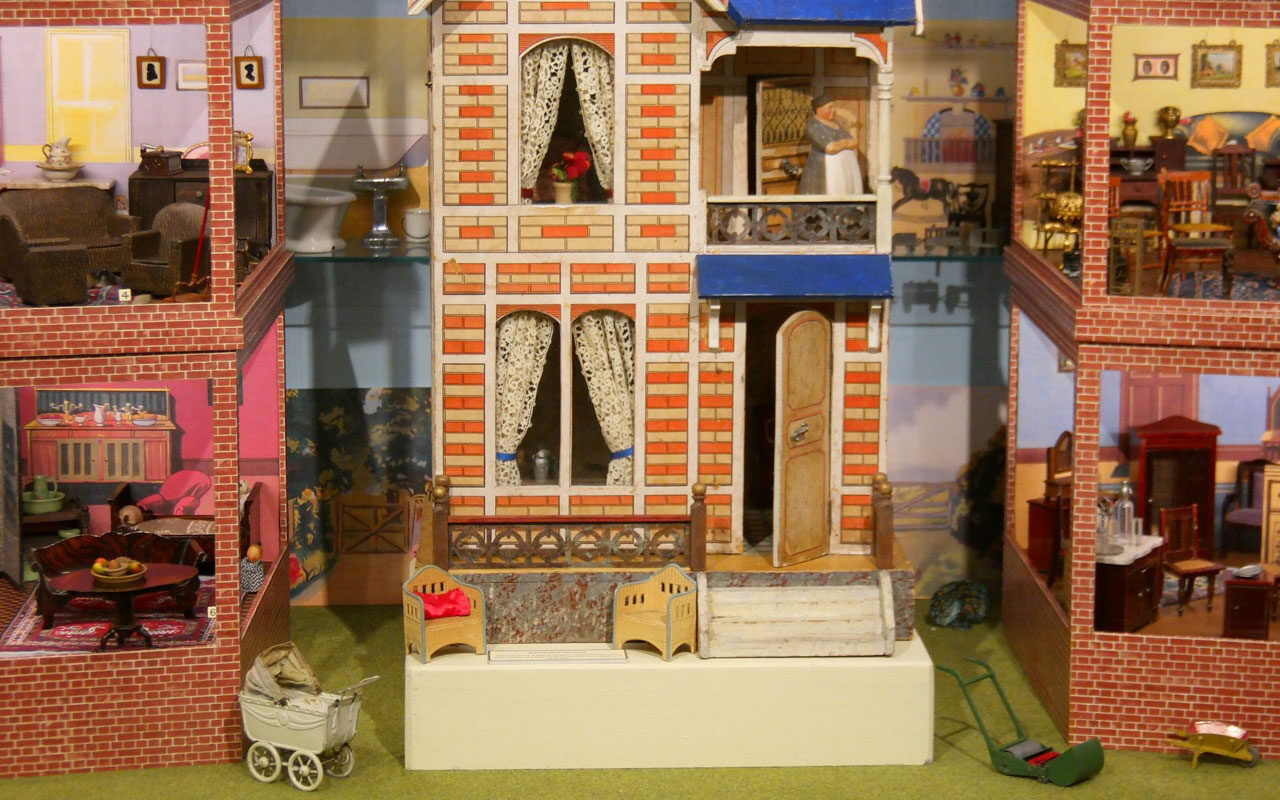Ellen McCarthy has written wonderfully about passions in her time at The Washington Post — both literally and figuratively. She wrote about technology, arts, and entertainment before her memorable run as the Post’s wedding reporter. That led to her acclaimed book “The Real Thing: Lessons on Love and Love from a Wedding Reporter’s Notebook.” She is now a part-time features writer for the Post and full-time mother of two young children.

In December, she wrote a can’t miss story on famed sex therapist Dr. Ruth Westheimer’s passion for dollhouses. We caught up with Ellen to talk about that story, the challenges of writing about Dr. Ruth, and a little bit about her own passions.
Q: First off, Ellen, how did you come across this story?
I was actively brainstorming story ideas when I came across a calendar listing for an exhibit featuring Dr. Ruth’s dollhouse collection at the National Building Museum. I was immediately intrigued. It seemed so incongruous — a woman known as an expert in a decidedly adult activity — sex — spending her time and money collecting toy figurines. I knew immediately that it was worth pursuing — if I could get her to talk.
Q: Yes, this is always the challenge, getting people to open up. You do it very well here. How much did you know about Dr. Ruth when you began?
I had a basic awareness of Dr. Ruth as the short-statured, heavily-accented, octogenarian sex therapist. But that was about it. Once I lined up the interview, I got to work reading everything I could about her. So, by the day we were scheduled to meet, I knew the basic biography of her life and had a long list of questions ready.
Q: We love the details of this story — Dr. Ruth’s refusal to use the word “Kristallnacht” because it sounds too lyrical to match that terrible event, the doll on the end table that looks like the doll she gave away to the crying girl, the coffee table so overcrowded with turtles that there is no room for even a glass of water. Did you know it would be so rich? How did you come upon these details which give us a deep sense of Dr. Ruth?
I will be honest: This was a challenging interview. Dr. Ruth, the famed sex therapist, was determined “not to be put on the couch” for this story. (And, I suspect, for any story.) I had taken a five-hour, early morning bus from DC to NYC to reach her and I was in her apartment for about 15 minutes when she said, “Okay! You have it all now, right? We are finished?” “Noooo,” I had to say. “We haven’t really started.”
Gene Weingarten, the unparalleled Washington Post feature writer, left a great legacy in the newsroom with his instructions that every story should be about the meaning of life. (I was once assigned to write about a blacksmith workshop. I rolled my eyes at such a boring story, until I remembered those instructions. Then I spent three hours with a 60-something man in his suburban forge. Turned out he’d spent his career as a government bureaucrat, pushing digital documents from one end of the ether to the other. Now he was making his wife an iron coffee table — something tangible and practical and beautiful and sure to last long after he’s gone.)
So, I just kept pulling the string with Dr. Ruth, letting her go on about whatever piqued her interest and then, occasionally, circling back to questions about how she felt at different moments in life and nibbling around the question “Why?” I take few, if any, notes when I interview people. I turn on my recorder and then maintain constant eye contact. I want people to feel the depth of my presence and attention. Then they can relax and just talk. (You know what they say about attention being the purest form of love…) After we wrap up, I’ll take a few pictures of details I want to record. It took a little while, but by the time Dr. Ruth finally ushered me out 90 minutes after I arrived, I felt I had enough to pull together a decent story that at least hints at the meaning of her extraordinary life.

How much did you think about this story? Was it something you had to write quickly or did you have a little bit of time to work through it?
This story was a pretty quick turnaround. I traveled up to do the interview one day. Spent another day transcribing it and then the third day had to sit down and write. It had to run in advance of the opening of the exhibit, so time was short. But, of course, once you start on a story it’s with you until you release it to the world. So the whole bus ride home I was figuring out my first paragraph and thinking through the heart of the story.
Q: How would you say this story affected you? Some stories change our perceptions or alter us in small ways — was this one of those stories? What sort of response did you receive? Did you hear from Dr. Ruth?
I was in awe of Dr. Ruth’s strength and virility. Being a reporter is such a lucky position in life because you get to gather wisdom from so many amazing people and then keep it as your own. I’ll never forget the image of Dr. Ruth, as a girl, giving her only doll to a younger girl who was crying on the train out of Germany. Dr. Ruth lost almost everything in life, but she maintained control of her inner world, choosing to focus on life, rather than loss. It’s an incredible tale of resilience. I never heard from Dr. Ruth after the story ran, but I heard from plenty of readers who were touched by it and by her work over the years.
Q: Finally, a personal one: What would you describe as your passion?
Like many reporters, I feel fortunate that one of my passions is also my profession. I feel very strongly about hearing people’s stories and then trying to do justice to their lives as I write about them.
My other big passion is little kids. I started in journalism in 2000, so it’s been an interesting time of change for the industry. This led to many discussions about our “Plan B’s” — what we would do if/when journalism is no longer an option. I always said I’d want to go work in a nursery school. I’m just happy when I’m around small children. I love their humor and innocence and lack of pretense. Right now, I work part-time as a journalist and am home part-time with my own two- and four-year-old daughters, which probably makes me the luckiest woman on earth. I’m so grateful for all of it.
